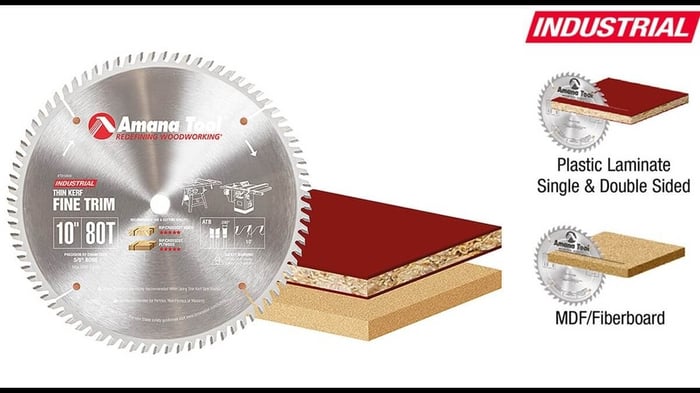
Dry for Success: Managing Moisture Content in Woodworking
Moisture content is a crucial factor in woodworking, affecting everything from the dimensional stability of your projects to their durability and appearance. Understanding how to measure, control, and work with wood at the proper moisture level is essential for producing high-quality, long-lasting pieces. In this article, we'll delve into the ins and outs of moisture content, providing practical tips and techniques for woodworkers of all levels.
Why Dry Wood?
Dimensional Changes:
Wood is a hygroscopic material, meaning it absorbs and releases moisture from the surrounding environment. When wood dries, it shrinks. Conversely, when it absorbs moisture, it swells. These dimensional changes can cause warping, twisting, and cracking if not managed properly.
Warping and Twisting:
Warping and twisting occur when different parts of a piece of wood dry at different rates. This uneven drying can cause the wood to bend or twist out of shape.
Increased Durability and Longevity:
Dry wood is more resistant to decay and insect damage. Moisture is a breeding ground for mold, mildew, and wood-destroying fungi. By keeping wood dry, you can significantly extend its lifespan.
Improved Gluing and Finishing:
Glue bonds are strongest when the wood being joined is dry. Moisture can weaken glue bonds and cause them to fail. Additionally, finishes adhere better to dry wood, providing a more durable and attractive surface.
Reduced Risk of Mold and Decay:
As mentioned earlier, moisture is a major contributor to mold and decay. By maintaining a low moisture content in your wood, you can significantly reduce the risk of these problems.
How to Measure Moisture Content
Pin-Type Moisture Meters:
Pin-type moisture meters are a popular choice among woodworkers. They work by inserting two pins into the wood and measuring the electrical resistance between them. The resistance varies depending on the moisture content of the wood.
 Professional-grade Kapro moisture meter is designed for precise and accurate measurements of wood or building material moisture levels.
Professional-grade Kapro moisture meter is designed for precise and accurate measurements of wood or building material moisture levels. Resistance-Type Moisture Meters:
Resistance-type moisture meters use a single probe to measure the electrical resistance of the wood's surface. These meters are generally less accurate than pin-type meters, but they are often more convenient for quick checks.
Calibration and Accuracy:
It's essential to calibrate your moisture meter regularly to ensure accurate readings. Calibration involves comparing the meter's readings to known moisture content samples.
Factors Affecting Moisture Meter Readings:
Several factors can affect the accuracy of moisture meter readings, including:
- Wood species
- Grain orientation
- Temperature and humidity
- Meter condition and calibration
Tip: For critical projects, consider using multiple moisture meters and taking readings from different locations in the wood.
Drying Methods
Natural Drying
- Air-Drying: Air-drying is a simple and cost-effective method of drying wood. It involves stacking the wood outdoors in a well-ventilated area, allowing the moisture to evaporate naturally.
- Solar Drying: Solar drying is similar to air-drying, but it utilizes the sun's heat to accelerate the drying process. Solar drying can be particularly effective in warm, sunny climates.
Kiln Drying:
- Advantages of Kiln Drying:
Faster drying time: Kilns can dry wood much more quickly than natural methods.
Better control: Kilns allow for precise control of temperature, humidity, and airflow.
Reduced risk of defects:Kiln drying can help prevent warping, twisting, and checking. - Disadvantages of Kiln Drying:
Higher cost: Kiln drying is generally more expensive than natural drying.
Requires specialized equipment: Kilns require significant investment in equipment and infrastructure. - Kiln Drying Schedules and Controls:
Kiln drying schedules vary depending on the wood species, dimensions, and desired moisture content. Kilns use a combination of heat, humidity, and airflow to control the drying process.
Other Methods
- Microwave Drying: Microwave drying uses electromagnetic waves to heat the wood from the inside out. This method is very fast but can cause uneven drying and damage if not carefully controlled.
- Vacuum Drying: Vacuum drying involves placing the wood in a chamber and removing the air. This reduces the boiling point of water, allowing the wood to dry at a lower temperature. Vacuum drying is often used for high-value woods that are susceptible to damage from traditional drying methods.
Effects of Working with Wet Wood
- Difficulty in Cutting and Shaping: Wet wood is more difficult to cut and shape than dry wood. It tends to be softer and more pliable, which can make it harder to achieve clean cuts and precise shapes.
- Poor Tool Performance and Dulling: Working with wet wood can put a strain on your tools. The moisture can cause tools to dull more quickly and can make it difficult to maintain sharp edges.
- Increased Risk of Splintering and Tear-Out: Wet wood is more prone to splintering and tear-out. This is because the fibers are less cohesive and more likely to break.
- Difficulty in Gluing and Finishing: As mentioned earlier, moisture can weaken glue bonds and make it difficult to achieve a strong and durable finish.
- Potential for Mold and Decay: Working with wet wood can increase the risk of mold and decay. Moisture provides the ideal conditions for these organisms to grow and thrive.
Tip: If you must work with wet wood, consider using a moisture meter to monitor its moisture content and take steps to dry it as quickly as possible.
Additional Considerations
Wood Species and Their Moisture Content Characteristics:
Different wood species have varying moisture content characteristics. Some woods, such as cedar and redwood, naturally have lower moisture content levels. Other woods, like oak and maple, tend to have higher moisture content. Understanding the moisture content characteristics of the wood you're working with is essential for proper drying and storage.
Storage and Handling of Dried Wood:
Once wood has been dried, it's important to store and handle it properly to prevent moisture absorption. Store dried wood in a dry, well-ventilated area. Avoid storing it directly on the floor, as moisture can rise from the ground. When handling dried wood, be careful not to damage the edges or create openings that can allow moisture to enter.
Seasoning and Acclimatization:
Seasoning refers to the process of drying wood to a specific moisture content. Acclimatization is the process of allowing seasoned wood to adjust to the moisture content of its new environment. By properly seasoning and acclimatizing wood, you can help prevent warping, twisting, and other moisture-related problems.
Moisture Content Requirements for Specific Woodworking Projects:
The ideal moisture content for wood can vary depending on the specific woodworking project. For example, wood used for furniture and cabinetry may require a lower moisture content to prevent warping and shrinkage. Wood used for outdoor projects, such as decking or fencing, may be able to tolerate higher moisture levels. Consult project-specific guidelines or consult with a woodworking expert to determine the appropriate moisture content for your projects.
Moisture content is a crucial factor in woodworking, affecting everything from the dimensional stability of your projects to their durability and appearance. By understanding how to measure, control, and work with wood at the proper moisture level, you can produce high-quality, long-lasting pieces.
Remember:
- Measure moisture content regularly: Use a moisture meter to monitor the moisture content of your wood throughout the drying and working process.
- Choose the right drying method: Consider factors such as wood species, dimensions, and desired moisture content when selecting a drying method.
- Store wood properly: Store dried wood in a dry, well-ventilated area to prevent moisture absorption.
Experiment with different techniques: Don't be afraid to try different drying methods and techniques to find what works best for your specific needs.
By following these guidelines and experimenting with different approaches, you can become a master of moisture content and produce exceptional woodworking projects.





